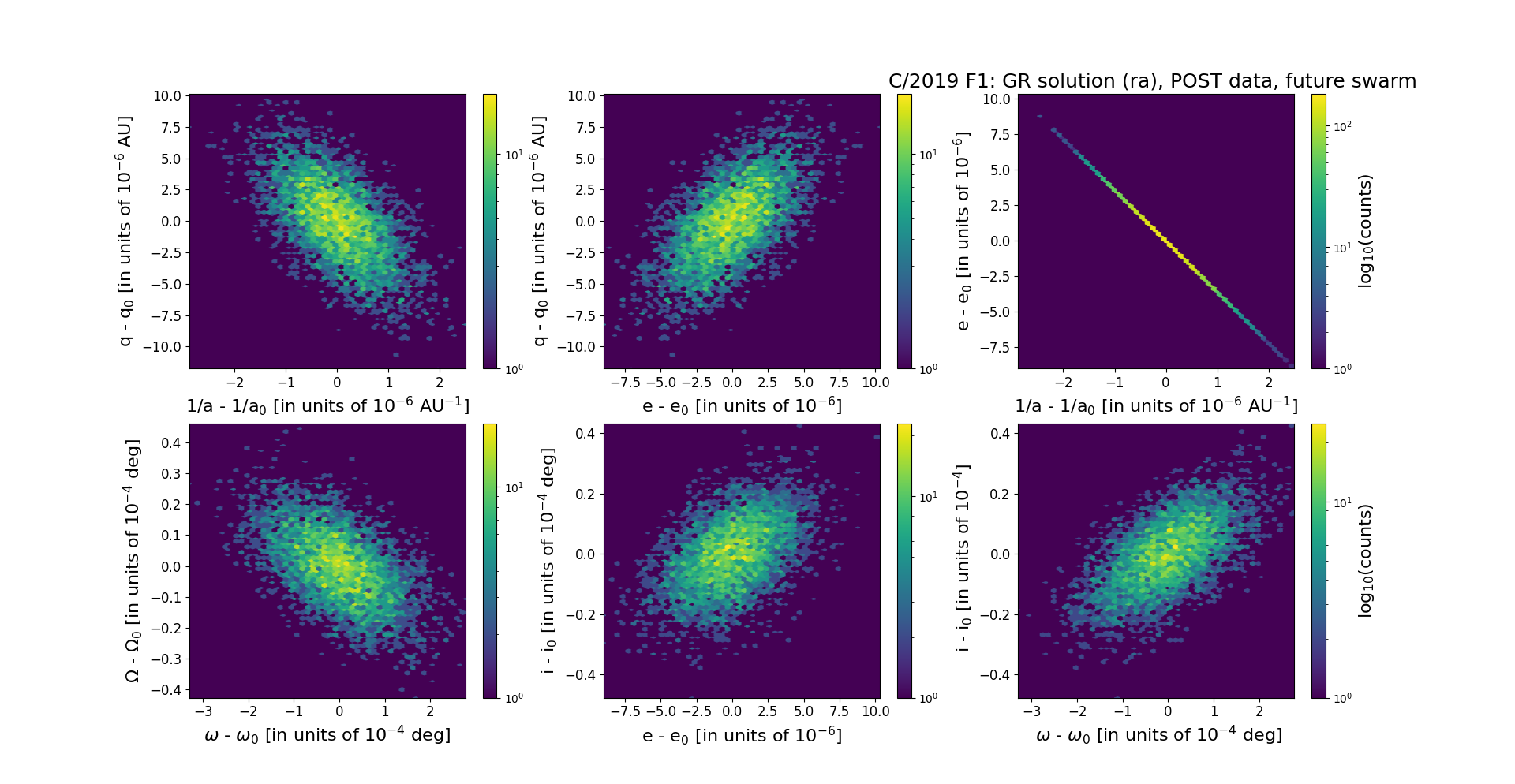C/2019 F1 ATLAS-Africano
more info
Comet C/2019 F1 was discovered on 28/29 March 2019, more than 2 yr before its perihelion passage. Later a series of pre-discovery observations were found going backto 8 February 2019. In the moment of orbit determination, this comet was still observed.
Solutions (GR and NG) given here span over 4.01 yr in a range of heliocentric distances: 7.96 au – 3.60 au (perihelion) – 6.24 au; also orbit based on pre-perihelion data and post-perihelion data are presented.
This Oort spike comet suffers small planetary perturbations during its passage through the planetary system that lead to a more tight future orbit (see future barycentric orbit).
Solutions (GR and NG) given here span over 4.01 yr in a range of heliocentric distances: 7.96 au – 3.60 au (perihelion) – 6.24 au; also orbit based on pre-perihelion data and post-perihelion data are presented.
This Oort spike comet suffers small planetary perturbations during its passage through the planetary system that lead to a more tight future orbit (see future barycentric orbit).
| solution description | ||
|---|---|---|
| number of observations | 551 | |
| data interval | 2021 07 07 – 2023 02 10 | |
| data arc selection | data generally limited to post-perihelion (POS) | |
| range of heliocentric distances | 3.6 au – 6.24au | |
| detectability of NG effects in the comet's motion | comet with NG effects strongly manifested in positional data fitting | |
| type of model of motion | GR - gravitational orbit | |
| data weighting | YES | |
| number of residuals | 1079 | |
| RMS [arcseconds] | 0.32 | |
| orbit quality class | 1a | |
| orbital elements (barycentric ecliptic J2000) | ||
|---|---|---|
| Epoch | 2326 03 09 | |
| perihelion date | 2021 06 23.63776300 | ± 0.00036824 |
| perihelion distance [au] | 3.59188462 | ± 0.00000299 |
| eccentricity | 0.99938347 | ± 0.00000247 |
| argument of perihelion [°] | 251.124563 | ± 0.000084 |
| ascending node [°] | 38.654788 | ± 0.000011 |
| inclination [°] | 54.306267 | ± 0.000011 |
| reciprocal semi-major axis [10-6 au-1] | 171.64 | ± 0.69 |
| file containing 5001 VCs swarm |
|---|
| 2019f1ra.bpl |
